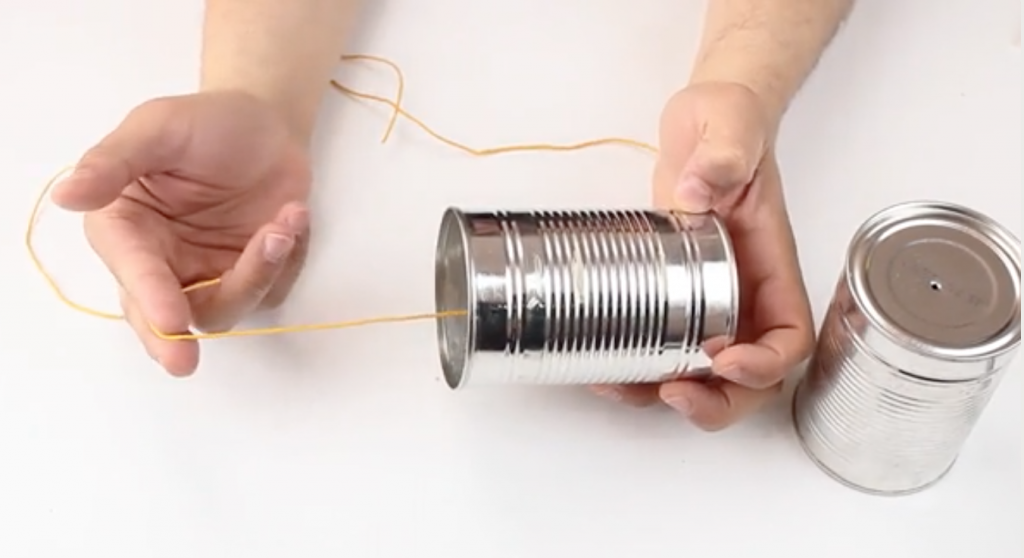String Telephone
Supplies, instructions, resources, and worksheets are below!

String Telephone
Project Description
Investigate and learn how sound travels by making a string telephone. Before the invention of the telephone, voice pipes or speaking tubes were used to communicate from a distance. According to Wikipedia, they could be used from a distance up to 300 feet, and are unaffected by complete electrical power loss!
Activity Time
1 days
Supplies Needed
2 empty tin cans
Nail
Hammer
Scissors
Different lengths and types of string
A partner
Investigative Worksheet
Note: Adult super vision and help required when using the nail and hammer.
Learning Objectives
Understand how sound travels
Understand design and assembling
Using tables and notes
Vocabulary Terms to Understand
Look up each word and write their definition on paper.
sound
acoustic
audio
vibration
Sound waves
Particles
Frequency
Transmission
Speed of Sound
Example Instructional Video
Instructions
1. Print the Investigative Worksheet.
2. Use the hammer and nail to put a small hole in the bottom of each can.
3. Cut a piece of string and insert one end through one of the holes in one can, and tie a knot on the end of the string (that is on the inside of the can). You can also use a piece of tape to secure the string on the inside of the can.
4. Take the other end of the string and do the same thing with the second can (as shown in the video above).
5. With your partner, test out how the sound travels. Put your ear up to your tin can, and have your partner speak into their tin can. Be sure to have the string tight when testing.
6. Investigate with different string types and lengths, and record your findings by making a table on the Investigative Worksheet.
Questions
How does sound travel?
Does sound travel faster or slower with different variables, such as different types of strings or distance?
What situations can a Speaking Tube or Voice Pipe be used for today?
More Resources
Speaking Tube
Can You Hear Me Now? Sound Technology of the 19th Century
Voice Pipes and Speaking Tubes
How Sound Travels
Ducksters: Basics of Sound
What is Sound?
History of the Telephone
Telephone
String Telephone with Paper Cups – alternative
